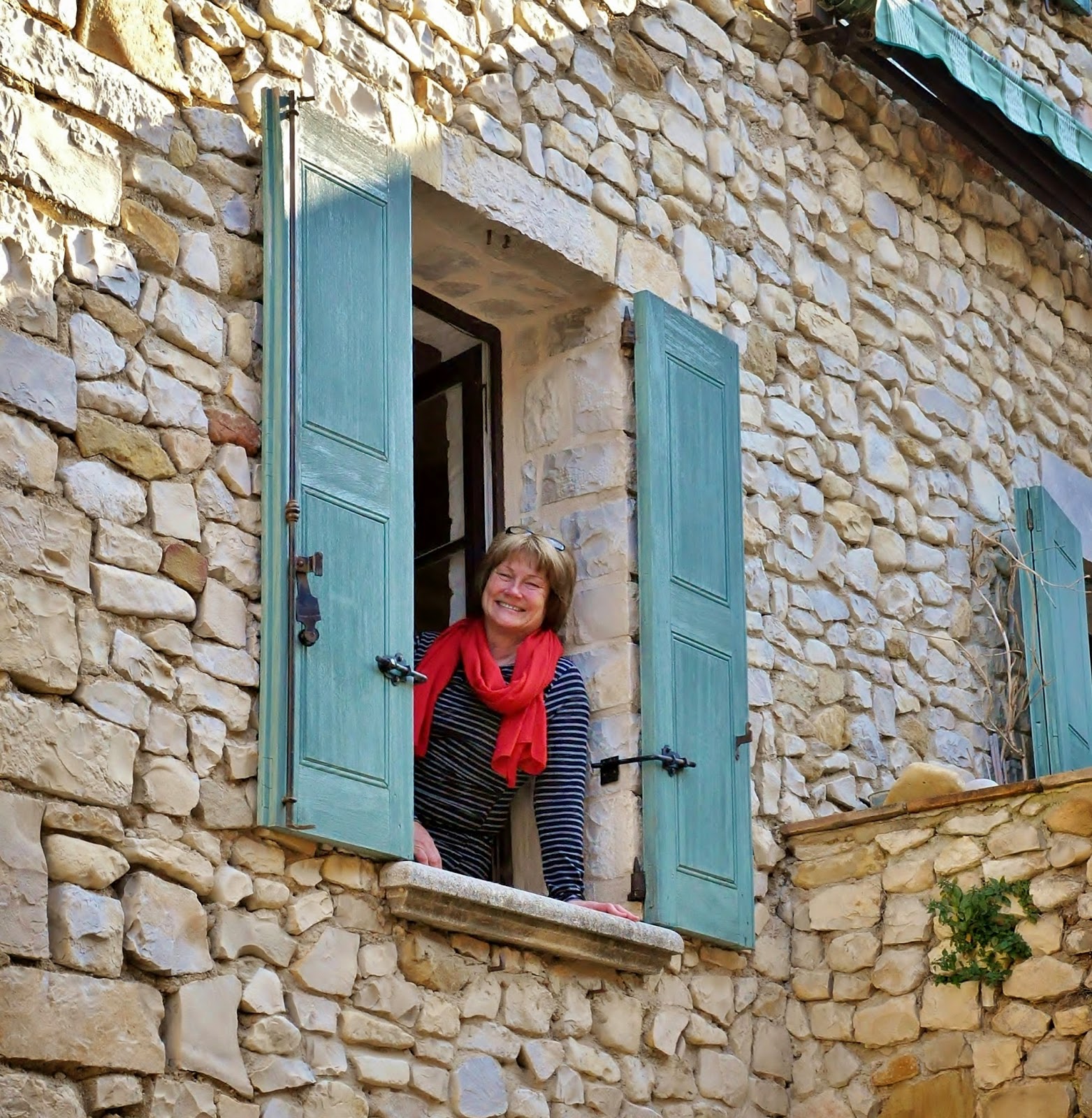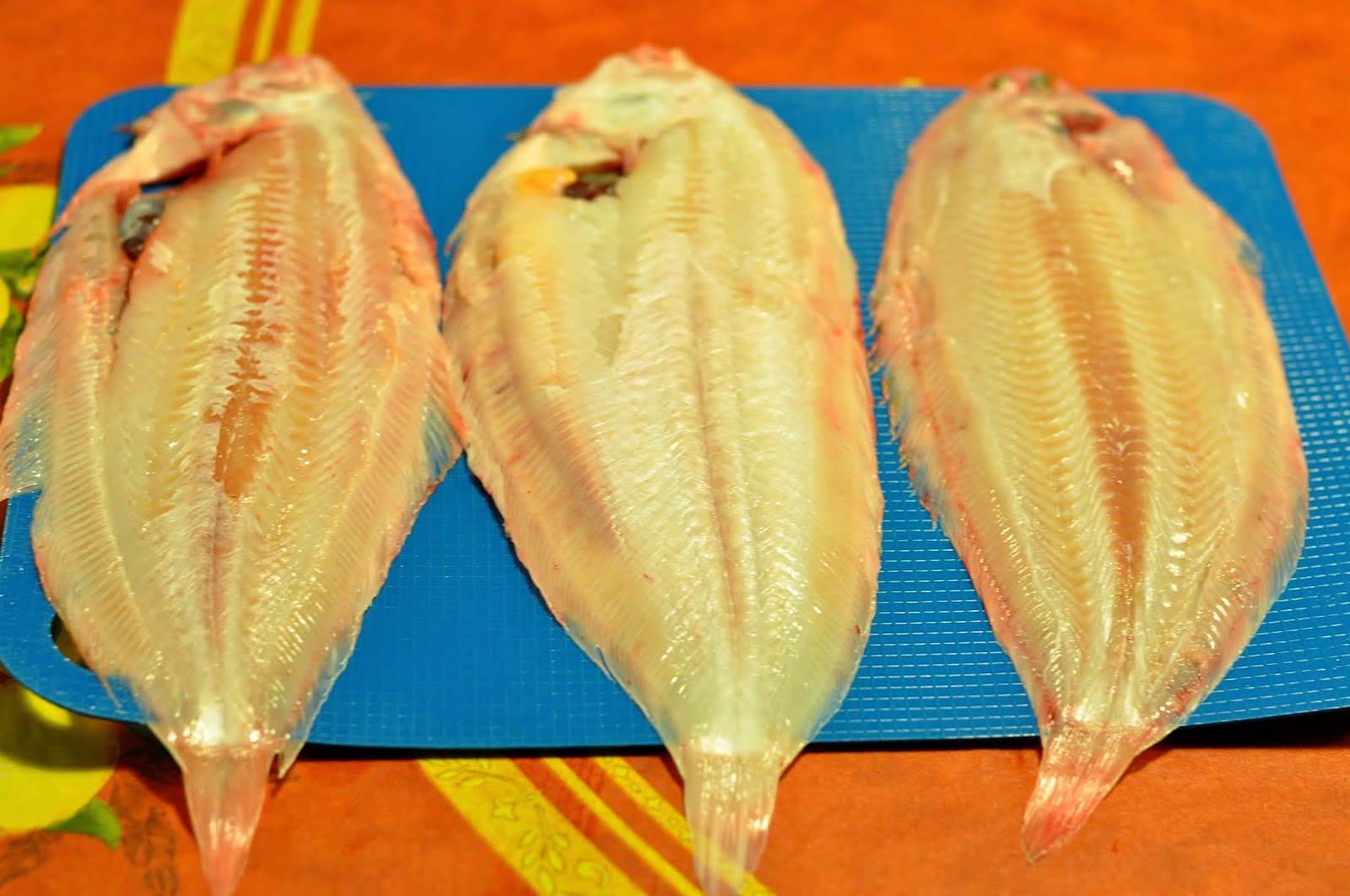We are blessed to have a house in
Sablet and live as Sabletains several times a year. If you don't know, the people who reside in Sablet are called Sabletains. We love our location at the base of the Dentelles de Montmirail Mountains surrounded by vineyards as far as you can see. Nearby are several small villages, some known for their beauty and others renown for the wine produced in the village.
Sablet is located between Séguret, a village classified as a "Plus Beaux Village de France," to the north and Gigondas, a village renown for its red wine to the south. We think Gigondas is one of the prettiest of all Côtes du Rhône wine villages and one you should visit if you love red wine.
From the road, Gigondas seems little more than a cluster of stone houses set on a hillside with a church below the Dentelles de Montmirail Mountains overlooking vineyard covered slopes and valley below.
 |
| Gigondas |
When I turn off for Gigondas, I follow the road up through the lower village, passing a succession of cafés and tasting rooms (caves) before arriving at Place Gabriel Andéol where the Mairie (town hall) and Caveau du Gigondas (wine growers cooperative), are located. I park near the fountain.
While Shirley and friend Kari went off to hike to the top of the Dentelles de Montmirail as I told you
here, I walked around Gigondas taking pictures before I went to taste wine at Domaine Du Grapillon D'Or. The pictures which follow are some I took that day.
 |
| Gigondas Town Hall |
If you like red wine, plan to stop in at the Caveau du Gigondas (wine cooperative) where you can taste more than 100 different Gigondas wines from 80 wineries and buy them at the same price as at the winery. The Caveau sells more than 80,000 bottles of wine each year.
 |
| Caveau du Gigondas |
The name Gigondas is of Roman origin. Jocunditas means great pleasure and enjoyment in Latin, with the town's origin and production of wine dating back to the Romans.
 |
| Gigondas Fountain |
I love the bright shutters, usually blue, I come across as I walk around Gigondas.
 |
| Gigondas Fountain |
 |
| Gigondas Sundial |
The stairway walk up to the hospice which dates from 1678. After the French revolution, the hospice became a girl's school up to the beginning of the 20th century when it was abandoned and fell into ruins.
 |
| Stairway Walk up to Hospice |
 |
| Iron Cross and vineyards in front of Gigondas ramparts |
The Gigondas castle and the defensive ramparts were built around the 13th to 14th century.
 |
| Gigondas Defensive Ramparts |
The Saint Catherine of Alexandria parish church with its central clock tower flanked by a campanile belfry dates from the beginning of the 17th century. A hollow on the front facade shelters a statue of the Virgin Mary.
 |
| Saint Catherine of Alexandria Church |
One of the many stone houses I came across as I wandered around Gigondas.
 |
| Gigondas Stone House |
 |
| Trimmed Plane Tree |
One of our favorite producers of Gigondas wine is Domaine La Bouissiere. This wine has been on the list of our
Bistro Des Copains since we opened back in June 2006. The tasting room is just a few steps from Place Gabriel Andéol.
 |
| Domaine la Bouissiere |
 |
| Another Village Fountain |
 |
| Stone House with Defensive Ramparts in the Background |
 |
| Porcelain Cicadas Decorate House Shutters |
The Dentelles de Montmirail provide a spectacular backdrop for Gigondas. As I told you
here, the Dentelles de Montmirail Mountain range is about 8 kms (5 miles) long and runs from Vaison-la-Romaine on the north end to Beaumes-de-Venise on the south. The tallest peak of the Dentelles de Montmirail range is St-Amand, at 734 m (2,400 feet).
 |
| Dentelles de Montmirail |
While Shirley and Kari made their way to the top of the Dentelles de Montmirail, I headed to Domaine Du Grapillon D'Or to taste wine. My tasting at the winery had been arranged by Bruno, the proprietor of Café des Sports in Sablet.
As I told you
here, Café des Sports usually has one or two tables occupied by local vintners playing card games. One of the vintners who frequents these games is Bernard Chauvet who is the proprietor of Domaine du Grapillon D'Or.
 |
| Domaine Du Grapillon D'Or |
Domaine du Grapillon D'Or is located on the hillside below the village of Gigondas. The property has been in the hands of the Chauvet family going back to 1806. Bernard has run the winery for the past 40 years. He is now assisted by his daughter Celine who makes the wine.
 |
| Domaine Du Grapillon D'Or buildings |
It is uncommon to walk into Côtes du Rhône wineries to dégust (taste) wine and find yourself in a bright, cheery, tastefully decorated, tasting room. So I was surprised by the tasting room at Domaine Du Grapillon D'Or. If you go to the winery, make sure you check out Bernard Chauvet's collection of wine corkscrews. There are more than 300 on exhibit, the oldest date back to the 18th century.
 |
| Domaine Du Grapillon D'Or Tasting Room |
The Domaine du Grapillon D'Or vineyards consist of 14 hectares (a little over 34 acres) on Gigondas hillsides, 2 hectares (approximately 5 acres) in Vacqueyras and 3.3 hectares (a little over 8 acres of Vin de Pays (country wine) made with Merlot-Caladoc grape varieties.
Grenache is the main varietal used in the blending of the Domaine du Grapillon D'Or wines. The Grenache gives the wines their structure and tanins while Syrah gives the wine its intense color and aromas. I liked each of the 4 different bottles I tried. I particularly liked the Gigondas, one of two bottles made from Gigondas wines.
 |
| Domaine Du Grapillon D'Or barrel room |
Before heading back to the village to meet up with the lady hikers, I went to visit Saint-Cosme and Saint-Damien Chapel on the north side of Gigondas on the road to the Col du Cayron pass. The Chapel was built in the 12th century, destroyed in the 16th century and restored in the 17th century. The Chapel is dedicated to two saints and brothers Cosme and Damian, protectors of surgeons and pharmacists.
 |
| Saint-Cosme and Saint-Damien Chapel in Gigondas |
If you like red wine, I can't say enough to encourage you to visit Gigondas and taste at Caveau de Gigondas or wineries such as Domaine La Bouissiere and Domaine Du Grapillon D'Or.
Have a great day. Chat soon.






























































